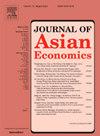制造业数字化对女性就业和性别工资差距的影响
IF 2.9
3区 经济学
Q1 ECONOMICS
引用次数: 0
摘要
本文利用中国制造业企业的数据,全面研究了制造业数字化对女性就业和性别工资差距的影响。研究结果表明,数字化为女性员工创造了更多就业机会,提高了她们的就业比例,缩小了男女工资差距。值得注意的是,数字化带来的女性就业增加在民营企业、东部和中部地区更为明显,尤其是在低技术行业。同样,数字化对缩小性别工资差距的影响在私营企业、东部地区和低技术行业最为显著。这些变化的内在机制表明,制造业数字化通过提高产出和生产率来增加女性就业,从而有助于缩小性别工资差距。这项研究对推进数字化和促进劳动力市场的性别平等具有重要价值。本文章由计算机程序翻译,如有差异,请以英文原文为准。
The impact of digitization in manufacturing on female employment and gender wage gap
This paper comprehensively examines the impact of digitization in manufacturing on female employment and the gender wage gap, utilizing data from Chinese manufacturing enterprises. The findings indicate that digitization creates more employment opportunities for female workers, increases their employment share, and narrows the gender wage gap. Notably, the increase in female employment due to digitization is more pronounced in private enterprises, as well as in the eastern and central regions, particularly within low-tech industries. Similarly, the effect of digitization on reducing the gender wage gap is most significant in private enterprises, eastern regions, and low-tech sectors. The mechanism underlying these changes suggests that manufacturing digitization enhances female employment through increased output and productivity, thereby contributing to a reduction in the gender wage gap. This study holds significant value for advancing digitization and promoting gender equality in the labor market.
求助全文
通过发布文献求助,成功后即可免费获取论文全文。
去求助
来源期刊

Journal of Asian Economics
ECONOMICS-
CiteScore
4.70
自引率
9.40%
发文量
90
期刊介绍:
The Journal of Asian Economics provides a forum for publication of increasingly growing research in Asian economic studies and a unique forum for continental Asian economic studies with focus on (i) special studies in adaptive innovation paradigms in Asian economic regimes, (ii) studies relative to unique dimensions of Asian economic development paradigm, as they are investigated by researchers, (iii) comparative studies of development paradigms in other developing continents, Latin America and Africa, (iv) the emerging new pattern of comparative advantages between Asian countries and the United States and North America.
 求助内容:
求助内容: 应助结果提醒方式:
应助结果提醒方式:


